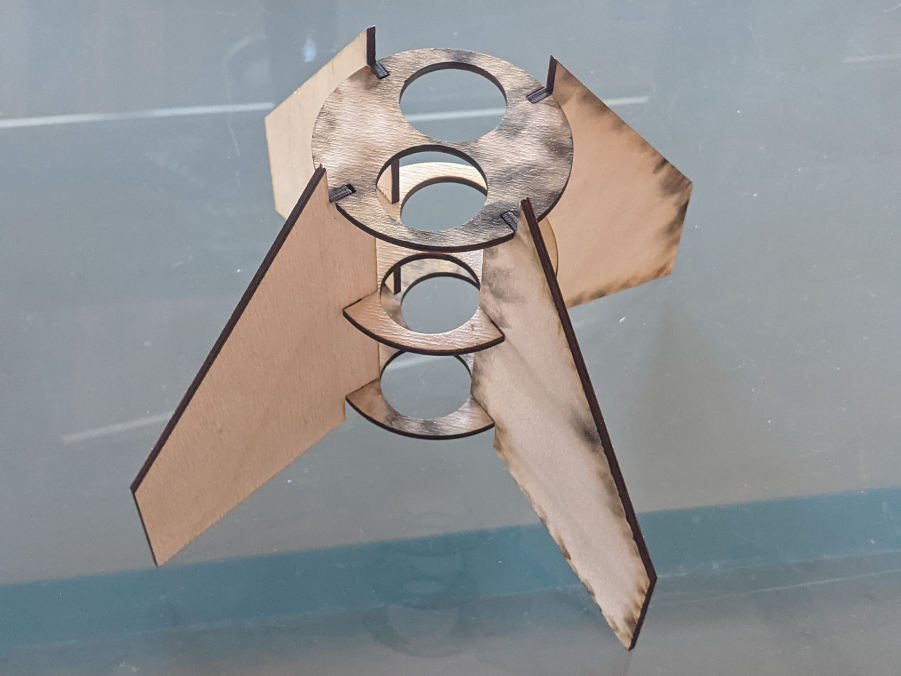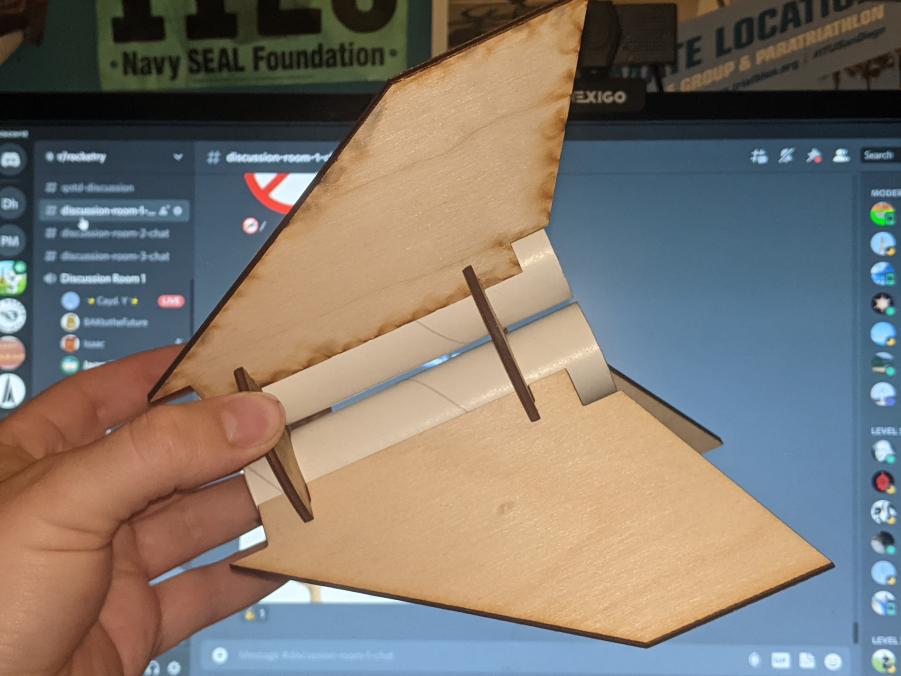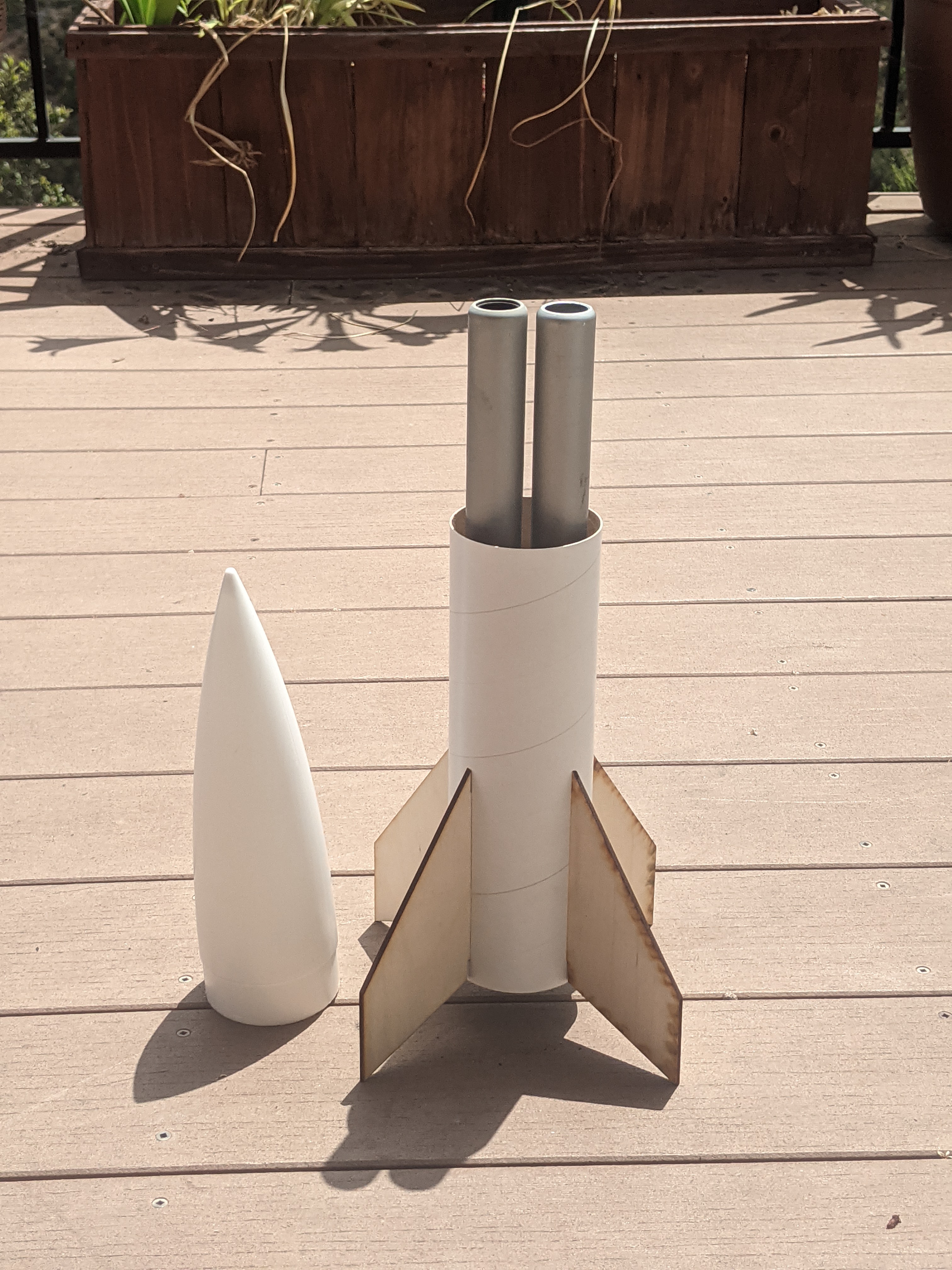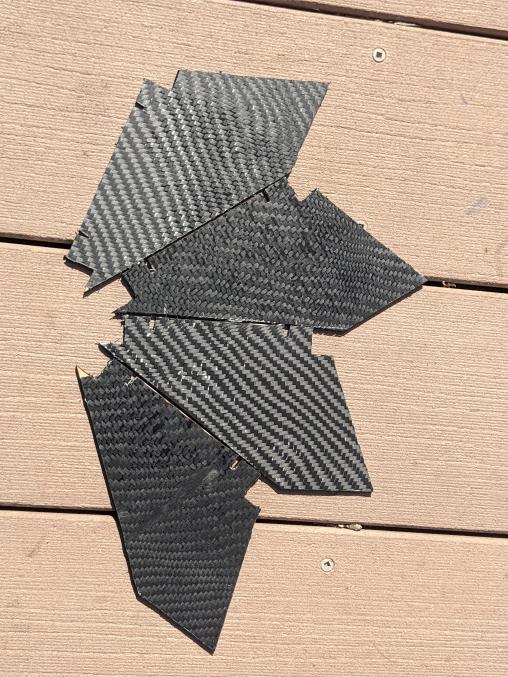Neutronium95
Well-Known Member
- Joined
- Jan 17, 2010
- Messages
- 1,080
- Reaction score
- 1,579
Last year myself and a friend came up with the idea of building some 2x29mm clustered Big Daddy rockets for LDRS. I ultimately ran out of time and motivation for mine, while his ended up having an eventful life, culminating in it's annihilation at Rocstock when one of the motors cato'd.
I decided to scale down my ambitions slightly, and instead of wrapping everything in composites and flying it on a pair of H233 motors, I decided to stick with cardboard and plywood, and just use a pair of punchy G motors. I got some custom fins and centering rings cut by James at Rocketry Works, and they came out great.

This is going to stay a relatively simple build, with motor eject and no composite reinforcement. I might build a version wrapped in carbon fiber in the future, but that's a problem for future me. Just a pair of G motors can get this scary fast, and I would love to fly a version of this on a pair of full H or baby I motors.

I decided to scale down my ambitions slightly, and instead of wrapping everything in composites and flying it on a pair of H233 motors, I decided to stick with cardboard and plywood, and just use a pair of punchy G motors. I got some custom fins and centering rings cut by James at Rocketry Works, and they came out great.

This is going to stay a relatively simple build, with motor eject and no composite reinforcement. I might build a version wrapped in carbon fiber in the future, but that's a problem for future me. Just a pair of G motors can get this scary fast, and I would love to fly a version of this on a pair of full H or baby I motors.









